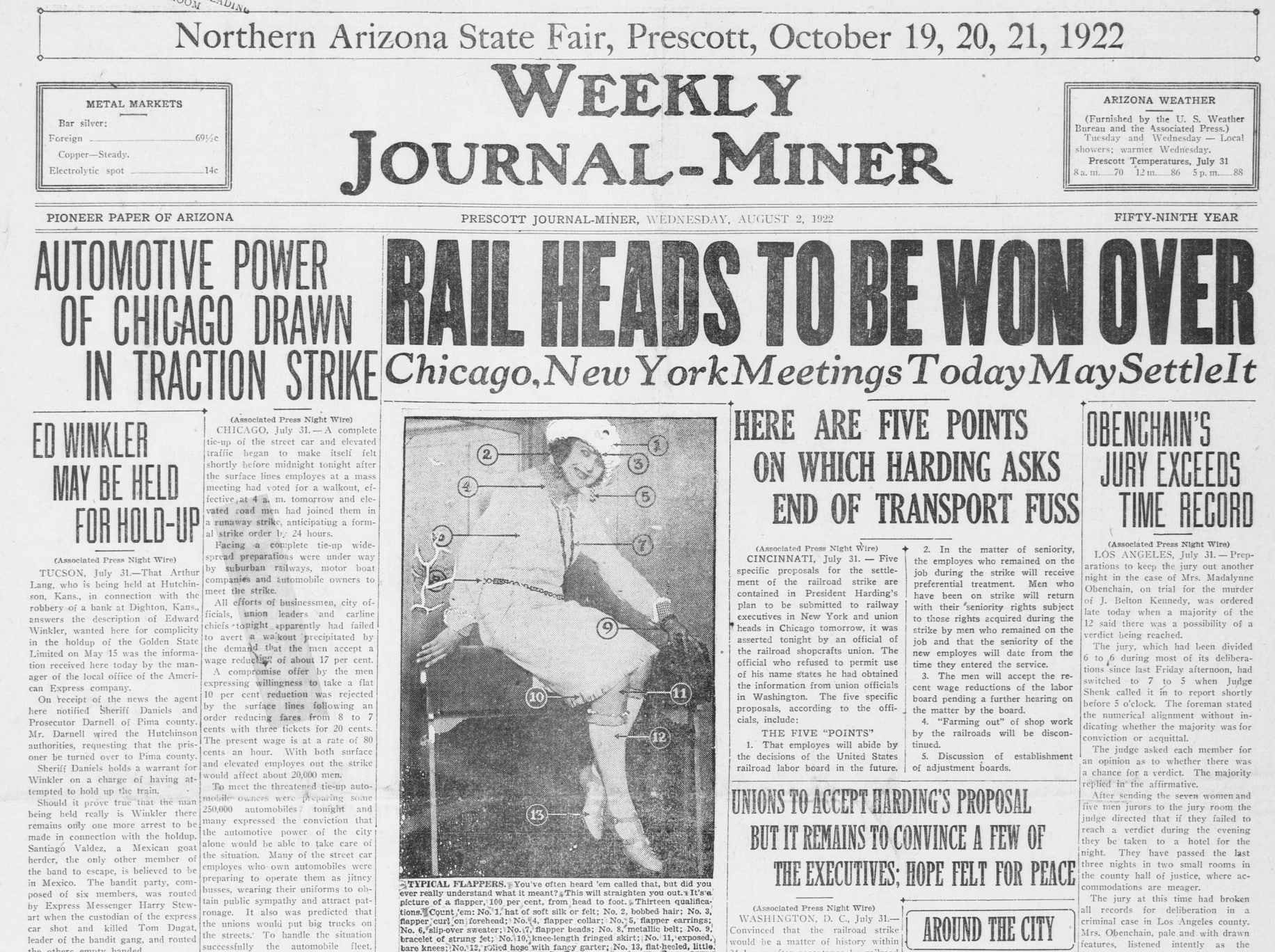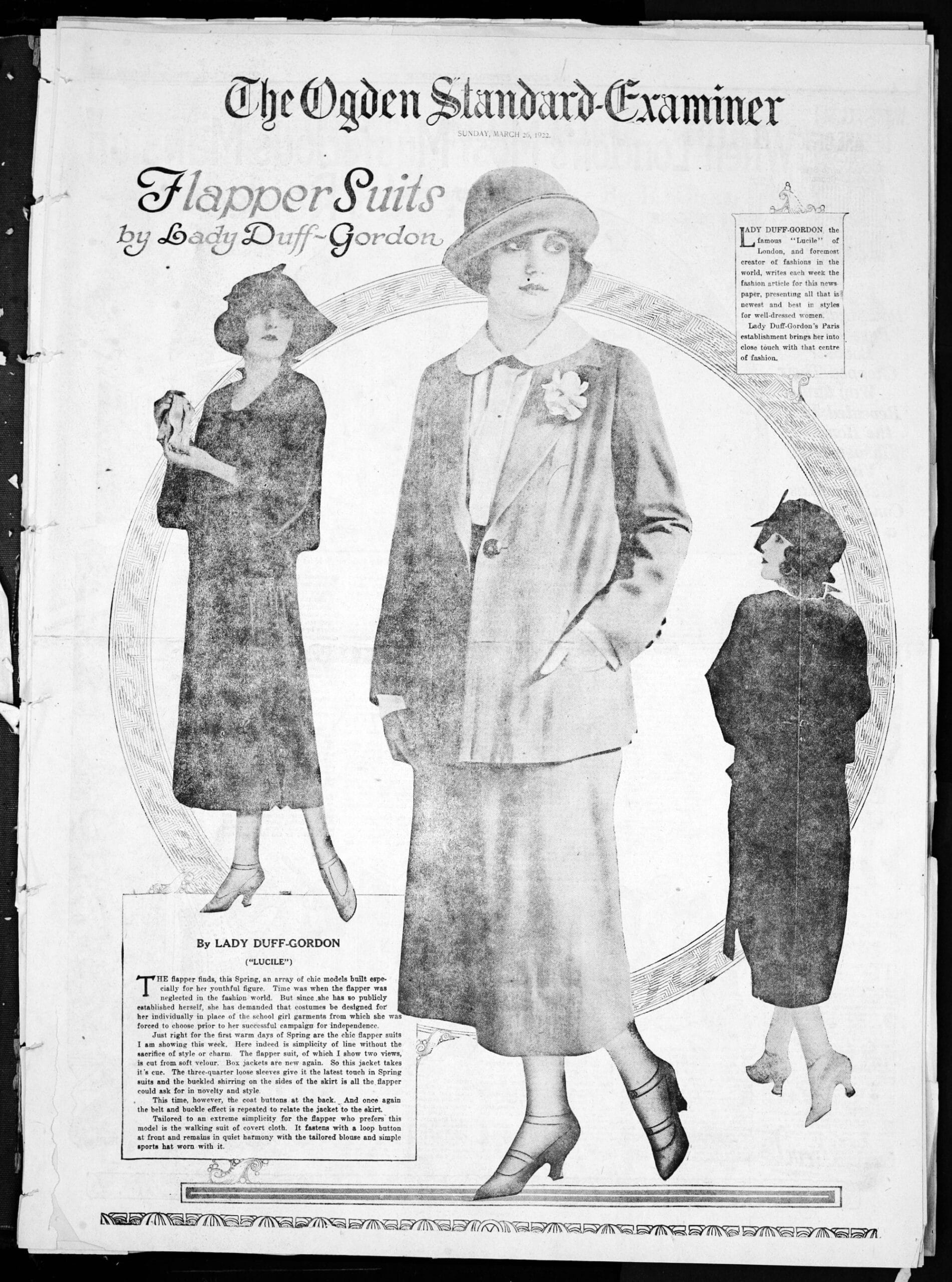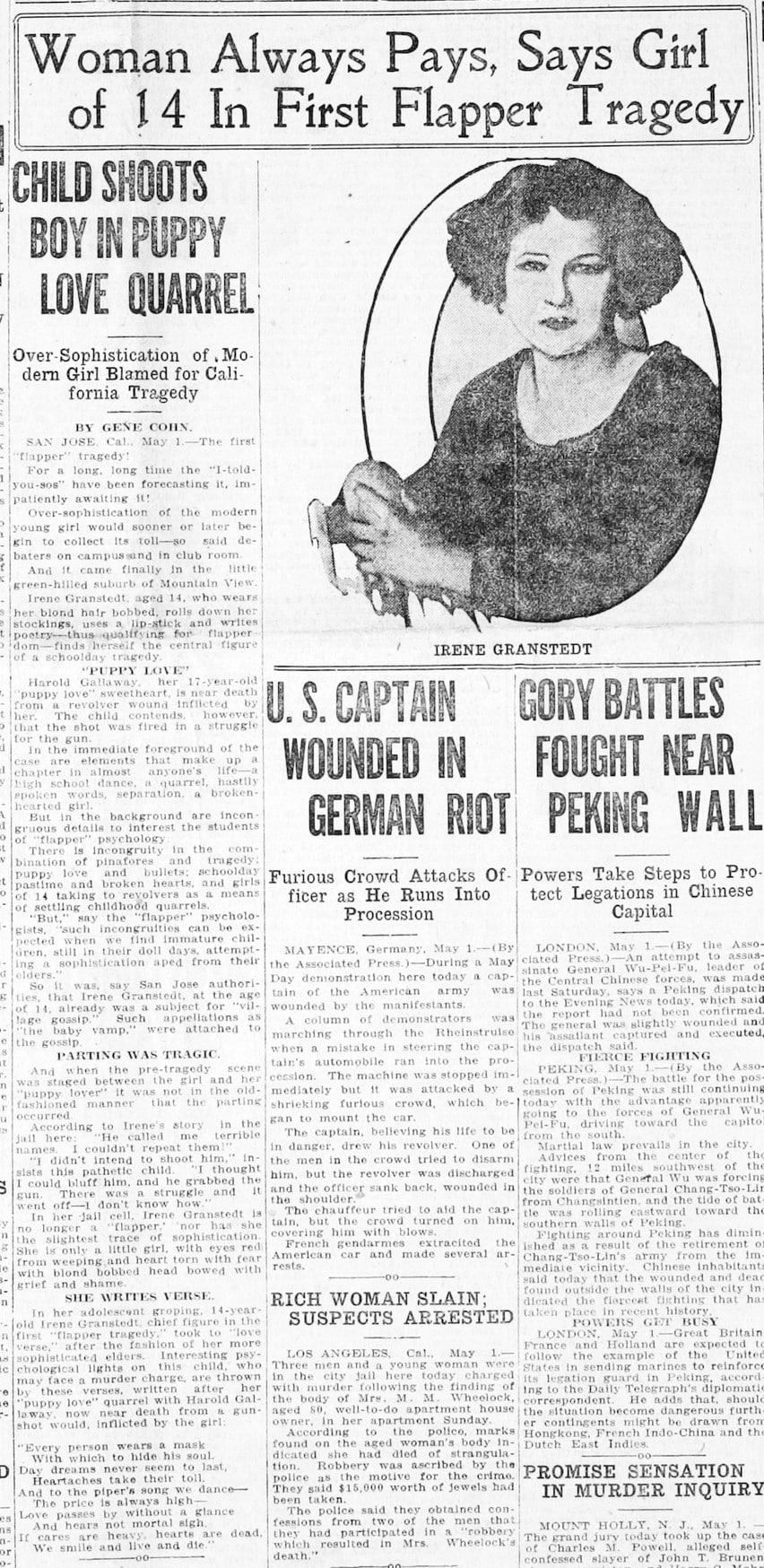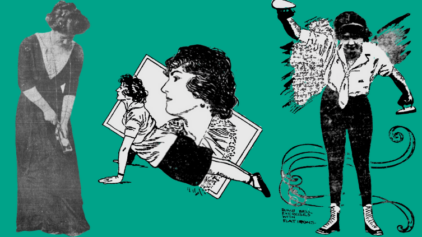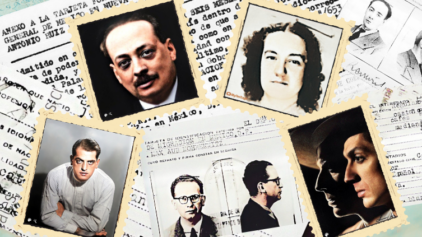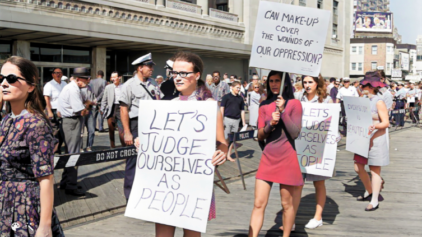‘Illegally Attractive’: 1920s Flappers as Described in the Newspapers of Their Time
- By Naama Lanski & Daniella Levy ·


Flappers were young women in the 1920s who challenged traditional norms and embraced a new, modern lifestyle. They were known for their short dresses or skirts, bobbed hair, and carefree attitude, embodying the spirit of the “Roaring Twenties”: a time of great social and cultural change in the United States post-WWI.
The loose-fitting, knee-length dresses were a stark contrast to the long, flowing gowns of previous generations. The bobbed hair was considered scandalous at the time. These young women, in freeing themselves from traditional constraints, threw away more than the stifling corsets. Flappers adopted an independent lifestyle, dancing the Charleston (at last — the loose dresses allowed them to really dance), smoking cigarettes and drinking in public, attending jazz clubs, and other activities that were considered taboo for women at the time.
Thus, flappers, sometimes called the “modern girls,” symbolized the new “liberated” American woman. As revolutionaries often are, they were also considered a threat to social order and morality, with traditionalist viewpoints disapproving of their modern lifestyle and changing gender roles. Accordingly, flappers were also depicted as shallow and materialistic, more interested in fashion and pleasure than in serious matters — even as dangerous and immoral.
In honor of International Women’s Day, our Research team dove into the newspapers on OldNews.com to see how newspapers from the 1920s described the new phenomenon. Here’s what we found.
The typical flapper
The Weekly Journal-Miner dedicated its front page in August, 1922 to explaining what a “Typical Flapper” is.
“You’ve often heard ’em called that, but did you ever really understand what it meant? This will straighten you out,” the newspaper promised. Under “a picture of a flapper, 100 percent, head to foot” no fewer than 13 qualifications of a real flapper were specified. These included “flapper curl on forehead”, “exposed, bare knees” and “rolled hose with fancy garter.”
Since the flapper “so publicly established herself” as part of her “successful campaign of independence,” The Ogden Standard-Examiner dedicated a whole page to flapper suits in March 1922. Lady Duff-Gordon, a renowned fashion expert who shared each week “all that is newest and best in styles for well-dressed women” presented flapper suits, designed with simplicity and “built for a youthful figure.”
‘Illegally attractive’
“Big Business Banishes the Flapper,” read a headline in The Morning Tulsa daily world on July 16, 1922, adding that the flapper “will at least be made non-existent during working hours in several big banks. All of which, as part of a movement for de-flapperizing female employees of business hours.”
The article explains that “this movement was first noticed in Newark, by a mother who sent her son to make deposits at a bank” and the young man took his time more than usual. The mother “investigated and found” that an “illegally attractive” young woman was behind his delay. “Her hair was bobbed, her hidden ears were hung with jade earrings, her low cut waist allowed certain exciting revelations, and suggested even more.” She even wore flat heeled sport shoes and “the way she checked the deposit slips had an insouciance suggestive of new age and new ideas.”
The young woman who allegedly caused the commotion and the imposed restrictions, reacted like a true flapper that “she couldn’t be held responsible for the wandering brain of some weak witted mother’s boy.”
‘Flapper tragedy’
“Flapperdom” was even blamed for the “near death” of a 17-year-old boy, Harold Gallaway, from a revolver wound inflicted by a 14-year-old flapper.
The “First Flapper Tragedy” was reported by The Ogden Standard-Examiner in May 1, 1922, claiming that the “over-sophistication of the modern young girl” is to be “blamed for the California tragedy,” in a suburb of Mountain View.
This modern girl was 14-year-old Irene Granstedt, “who wears her blond hair bobbed, rolls down her stockings, uses lipstick, and writes poetry — thus qualifies for flapperdom.”
She found herself “the central figure of a schoolday tragedy” after accidentally shooting Harold, presented as her sweetheart, during their “puppy love” quarrel. Irene is quoted as saying: “I didn’t intend to shoot him. I thought I could bluff him, and he grabbed the gun. There was a struggle and it went off — I don’t know how.”
The newspaper article reassures the readers that “in her jail cell Irene Granstedt is no longer a flapper, nor has she the slightest trace of sophistication. She is only a little girl with eyes red from weeping, a heart torn with fear, and a blond bobbed head bowed with grief and shame.”
Flapperdom: not a health hazard
Apparently, there were rumors that flappers’ clothes endangered women’s health! The Painesville Telegraph investigated the matter in July 1922, and reported that a doctor with twenty years experience “laughed when asked if skimpy clothes would undermine the modern girl’s health.” As far as health is concerned, “they could revert clear back to Eve’s fig leaf without batting an eye,” the physician joked.
Famous flappers
Here are a few photos of famous 1920s flappers, colorized and enhanced with MyHeritage’s photo features:

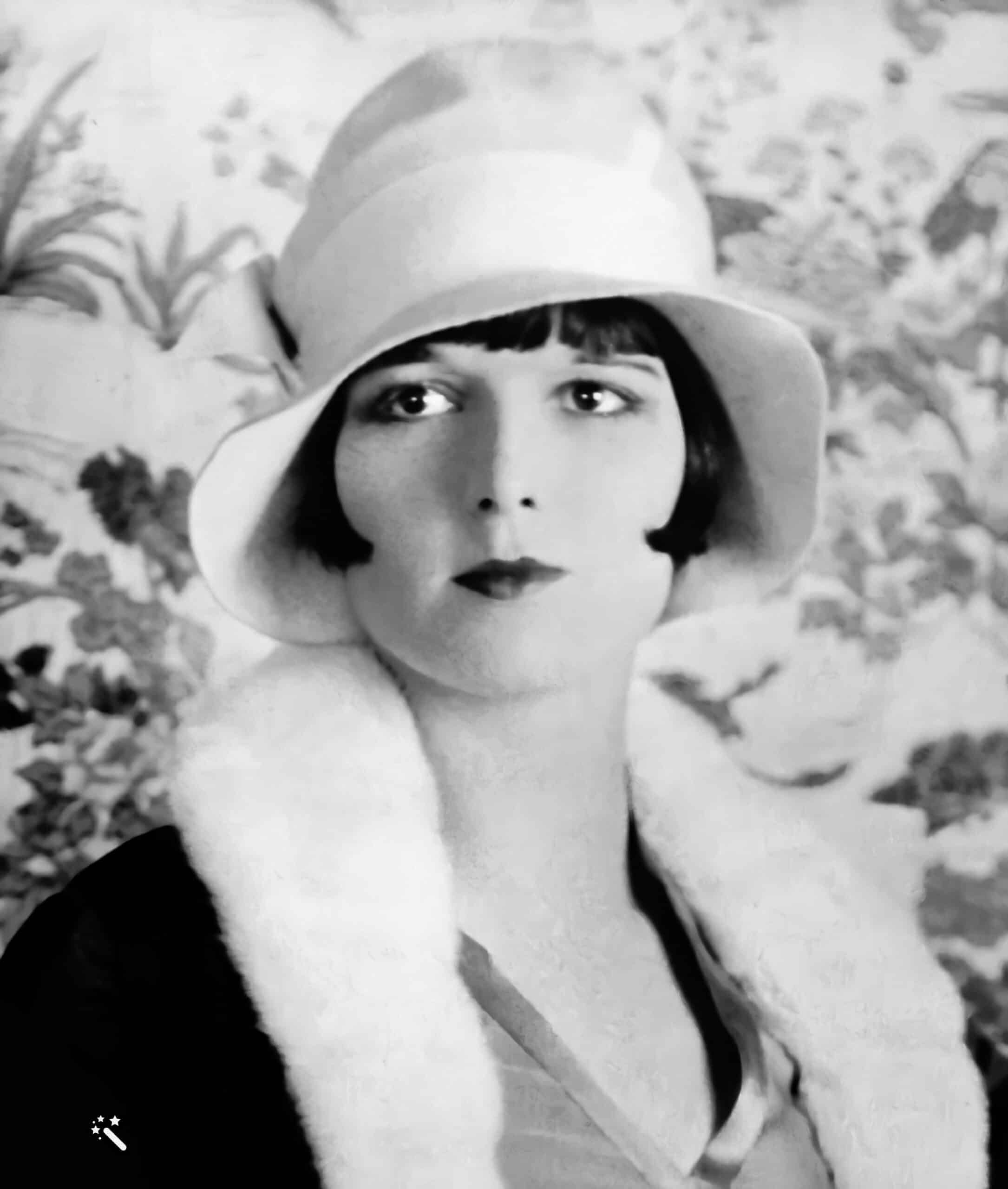




What were your ancestors up to in the Roaring Twenties? Find their stories in the historical newspapers on OldNews.com!
